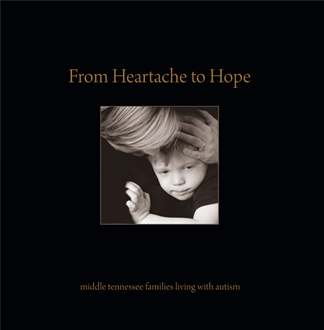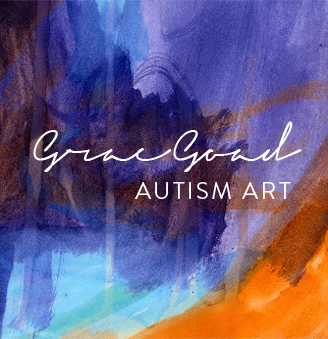Today's post is the fourth in a weekly summer series (here, here & here) of featured guest posts about disAbility. Lacey Lyons is an Belmont University adjunct professor of English who has partnered with Courtney Taylor Evans and I at several workshops teaching parents and people with disAbilities to tell their story. Here, Lacey shares a glimpse of her beautiful story here. As a mother, I sobbed during our recent presentation when I heard her read this particular story for the first time:
"When my English students at Belmont University interview individuals
with disabilities for a class assignment that is part of a semester-long
research project, they always include the following in their lists of
questions: What is the biggest challenge you face in your life at this moment?
It is often a helpful place for them to begin when deciding the theme of a
person’s story. There is usually an issue that is front and center in these
advocates’ minds, a problem they hope telling their story will illuminate. When
I was asked to tell a bit of my own story with epilepsy and cerebral palsy
today, I decided to ask myself the same question. I knew I could not tell you
about thirty-one years of medical and personal history in the five minutes I am
allotted. And as I thought, I realized that my life is stable right now in
terms of seizure control. My last absence seizure was on June 20, 2012. (I
never want to look in my seizure journal during long periods of seizure freedom
because I am so superstitious that I think the act alone might jinx my good
luck.) I still take medication that I can barely pronounce three times a day:
the generic form of Keppra XR, the generic form of Trileptal, brand-name
Lyrica, and folic acid. But, in the grand scheme of where my journey with
epilepsy began, collapsed in an elementary-school classroom in a generalized
tonic clonic seizure, these are a small price to pay. The question with which I
grapple now is a luxurious one: How do I
learn not to worry about seizure activity as much as I used to? How do I trust
daily life, while still monitoring my body for fatigue, hormonal fluctuations,
sufficient food intake, and compliance, my four major triggers?
"Recently, I had become so used to worrying about
the price of medications, but not the risks that taking them involves, that I
made a stupid mistake. I have gotten so used to taking my night dose at 6 p.m.
and continuing with cooking dinner or setting the table that I forgot to stop
and eat a snack with my meds. How many bottles have I purchased in my life that
read “Take with food?” Yet I would graze on a few crackers and move on with my
evening. A few months ago, I began to feel nauseated and suddenly, extremely
fatigued at about 8 p.m. every night. My left arm, the arm that always tingles
just before an absence seizure, would numb, beginning at the fingertips. I
massaged my arm and lay down until the tingling stopped, my vision blurred the
entire time. I worried that my luck had run out. I called my neurologist from
work. I talk in my classes about my disability all the time, telling my
students that if they have questions before they interview their assigned
advocates, to ask me anything. And yet, I made this phone call from my cell
phone, not the one in my office with its open door, standing by the side of the
building in shade and relative privacy. I noted the irony of my location as I
spoke. My neurologist reminded me that by not eating enough with my medicine, I
was essentially giving myself an overdose, because there was no food in my
system to absorb the drugs and release them into my body slowly. I felt so
stupid, because I knew that-I’d simply allowed myself not to be as vigilant or
as careful as I would have been if I were having a seizure every month.
"If this episode had occurred during my childhood or teenage years, my
mother and I would have gone to the Vanderbilt neurology clinic together to
talk to my doctor. “We” have been having some health problems, she or I would
tell him. What should “we” do? I never minded the somewhat inaccurate use of a
first-person plural pronoun to describe my health, never felt intruded upon or
smothered, because the truth is that both she and I do experience my seizures,
just from different points of view. I keep a seizure journal that I bring with
me to my appointments, and Mama and I usually spend the drive there talking out
the issue and hypothesizing about the origin of the problem and possible
treatments. By the time we reach the clinic, we have a plan, and it’s usually
one with which my doctor agrees. But as an adult and an advocate for myself,
I’ve learned to take the lead in my own care. This makes all the difference in
the way I tell my story. What parts of it made a lasting impression on me? What
difference does it make that unless we are together or I’m with people who know
us both, it’s “my” story, not my mother’s and mine together? I sometimes wonder if I am qualified to speak
about my own experience, given that when my seizures occur, I am not fully
aware of my surroundings. But I have learned as an advocate to process
information that I might otherwise internalize and use that knowledge to help
others. It’s not only cathartic to me, but instructive to my audience.
"As a writer, I have
familiarized myself with the issue of ownership of a story. My students and I
talk about it all the time in our classwork. In what ways, I ask them, do you
have a right to your personal narrative, and do those rights come with
limitations? Much of my story is shared, but at its core is my own damaged
brain. But in writing, as in life, there is no story without tension, without
flaws."
Whoops! This post was inadvertently prescheduled for Mon. July 8, last week and was published for about five hours while I went about our usual summer drill. Thankfully, a friend posted what I was supposed to publish that day–my piece for Vanderbilt Children's Wishing Well, to my Facebook time line, reminding me I need to publish a link to my piece over there. Huh? Got that? Apologies for the confusion!




